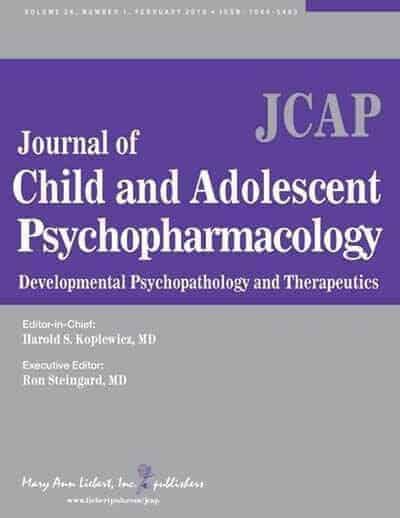Maladaptive and impulsive aggression is explosive, triggered by routine environmental cues, and intended to harm another person, making it a significant challenge for clinicians, family members, and others who interact with affected children and adolescents. Efforts to develop effective treatments would benefit from better descriptive and quantitative methods to characterize this disorder, as described in an article published in the Journal of Child and Adolescent Psychopharmacology, a peer-reviewed journal from Mary Ann Liebert, Inc., publishers. The article is part of a new Special Issue on Impulsive Aggression in Psychiatric Disorders, which is available free on the Journal of Child and Adolescent Psychopharmacology website.
Dan Connor, MD, University of Connecticut School of Medicine (Farmington), is Guest Editor of the special issue and is also the author of the article “On the Challenge of Maladaptive and Impulsive Aggression in the Clinical Treatment Setting”. In children and adolescents receiving psychiatric care, impulsive aggression is associated with more significant illness and poses a major challenge for clinicians, as there are few evidence-based treatments available. The lack of a unified clinical definition of impulsive aggression and of clear measures to characterize the aggressive child have slowed progress in the development of effective treatments. Dr. Connor emphasizes the need for validated rating scales that precisely measure impulsive aggression within well-defined disorders.
The Special Issue includes a collection of Perspective and Original Research articles that provide a focused look at key issues in basic biology, patient evaluation, clinical care, and the development of novel treatments and therapeutic approaches. Topics include the neurobiology of impulsive aggression, analysis of rating scales that measure hostility and aggression in psychiatric disorders such as autism spectrum disorder and attention deficit hyperactivity disorder, impairment and impact on social functioning, and behavioral interventions and pharmacotherapy.
“Impulsive aggression is one of the most disabling and most difficult to treat symptoms of children with psychiatric disorders,” says Harold S. Koplewicz, MD, Editor-in-Chief of theJournal of Child and Adolescent Psychopharmacology and president of the Child Mind Institute in New York.
If our reporting has informed or inspired you, please consider making a donation. Every contribution, no matter the size, empowers us to continue delivering accurate, engaging, and trustworthy science and medical news. Independent journalism requires time, effort, and resources—your support ensures we can keep uncovering the stories that matter most to you.
Join us in making knowledge accessible and impactful. Thank you for standing with us!


Obviously it is difficult to treat because the methods being used are incorrect.